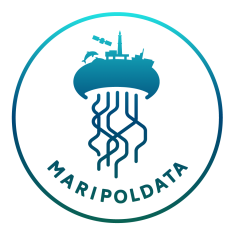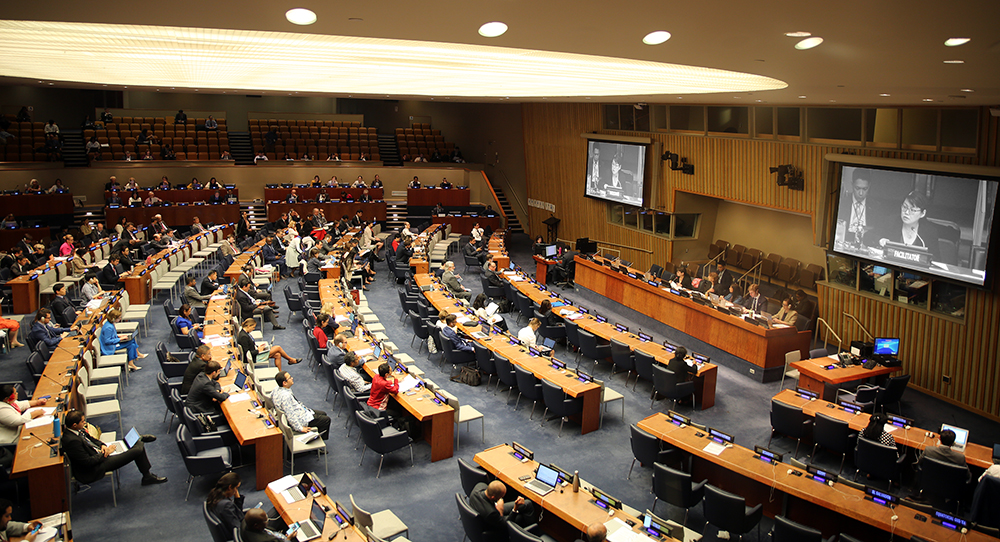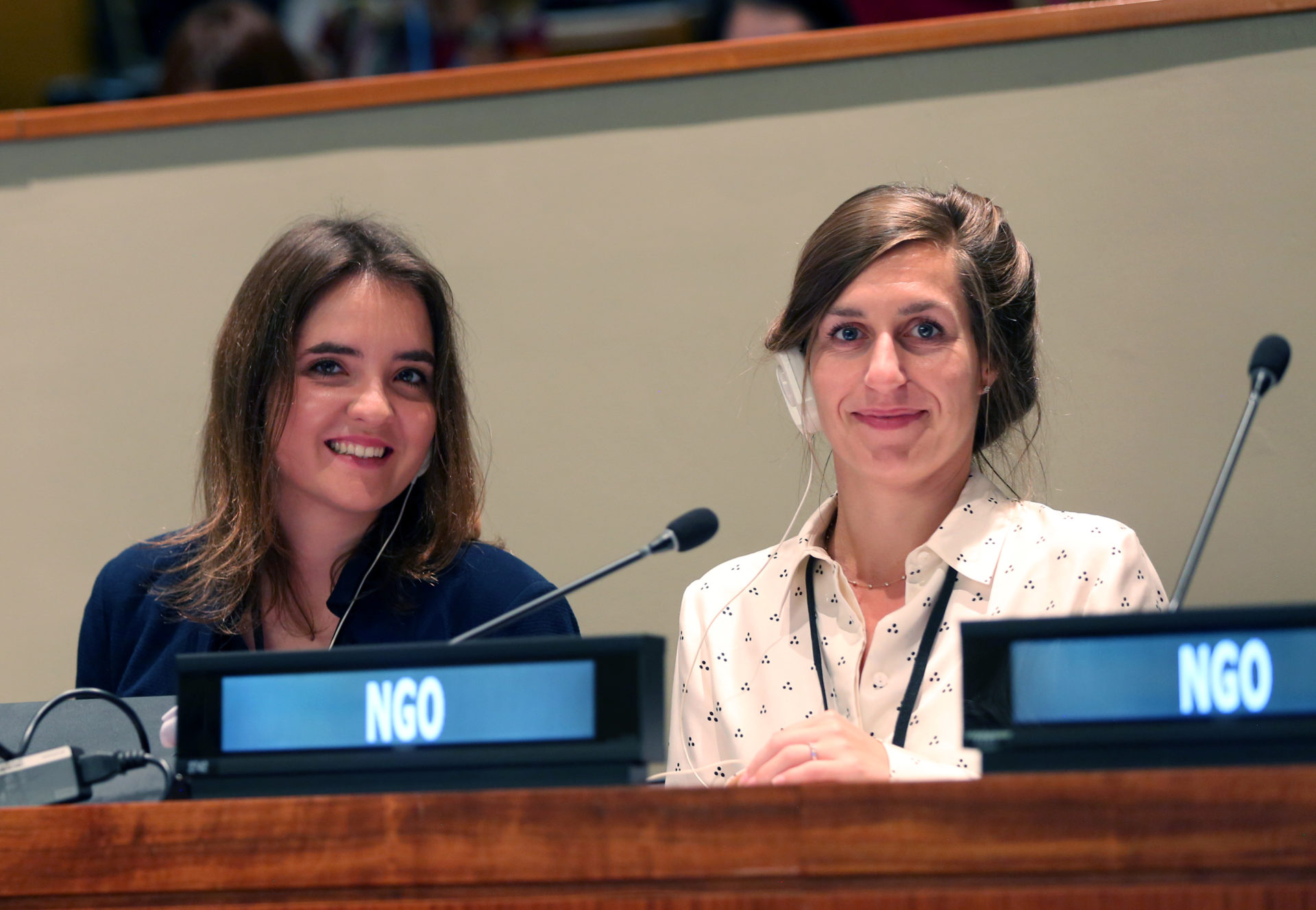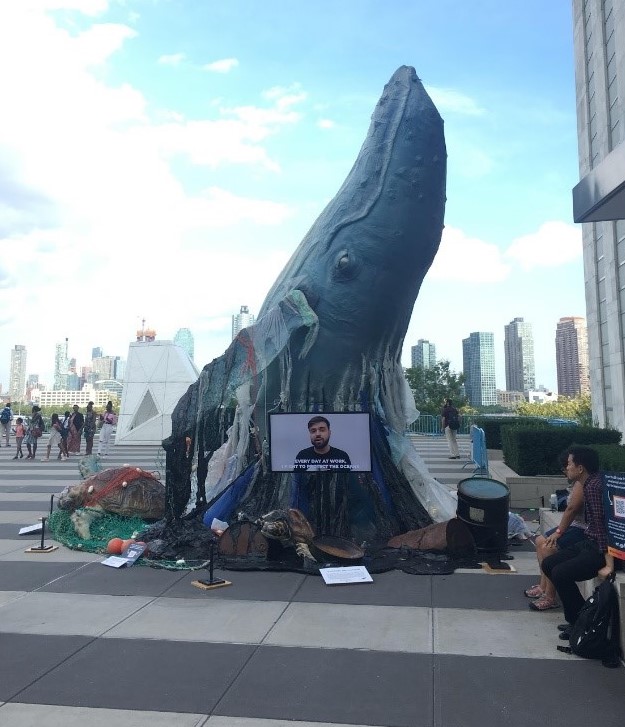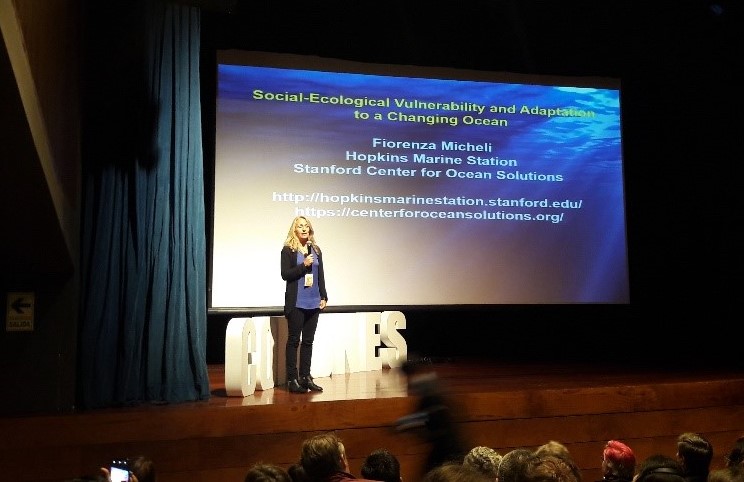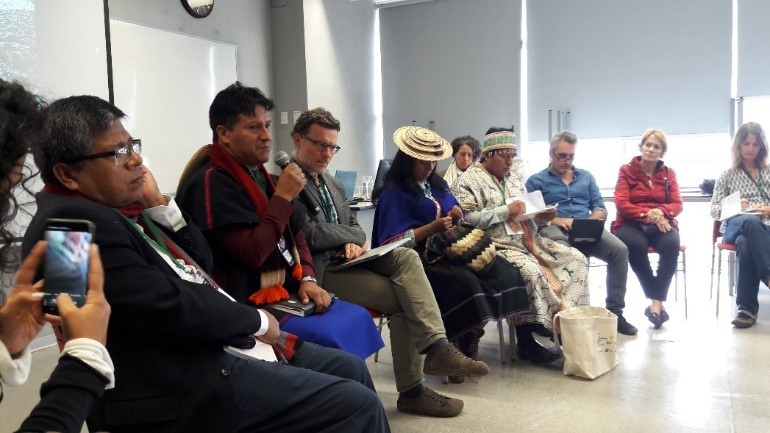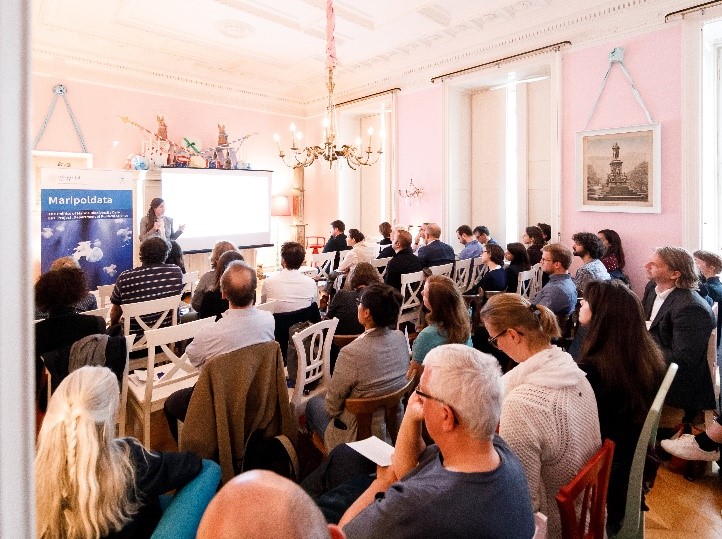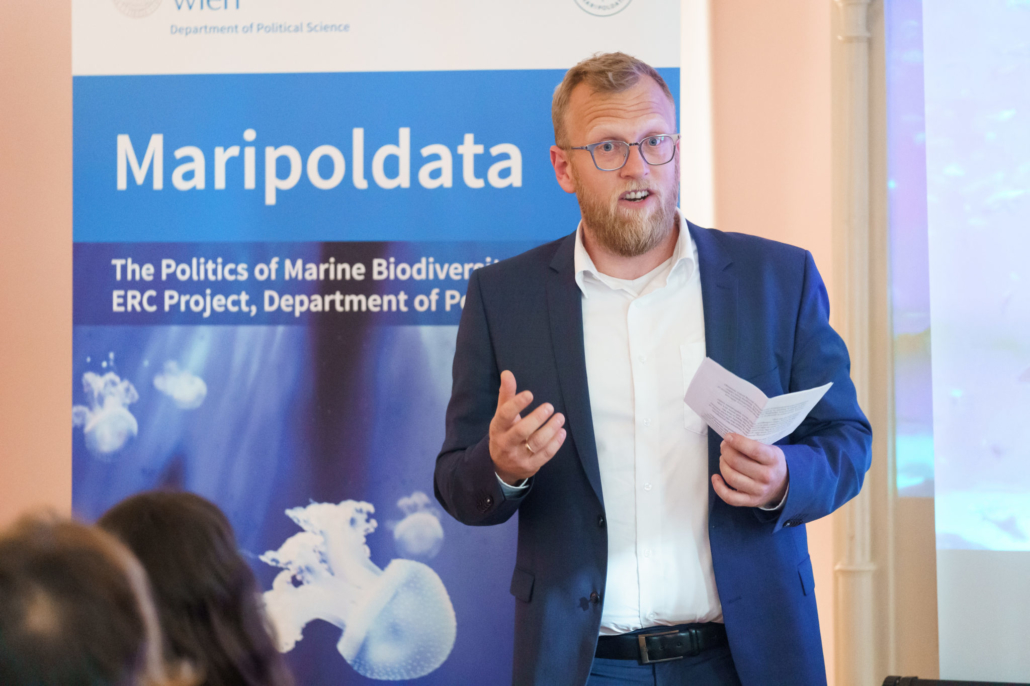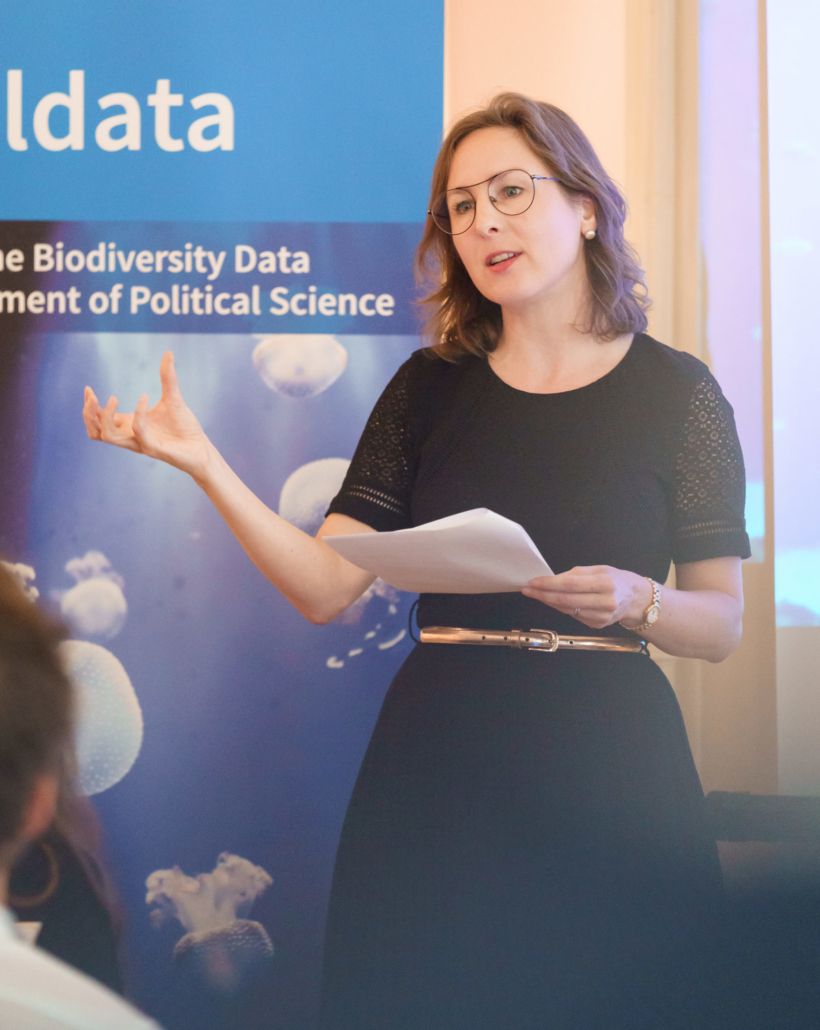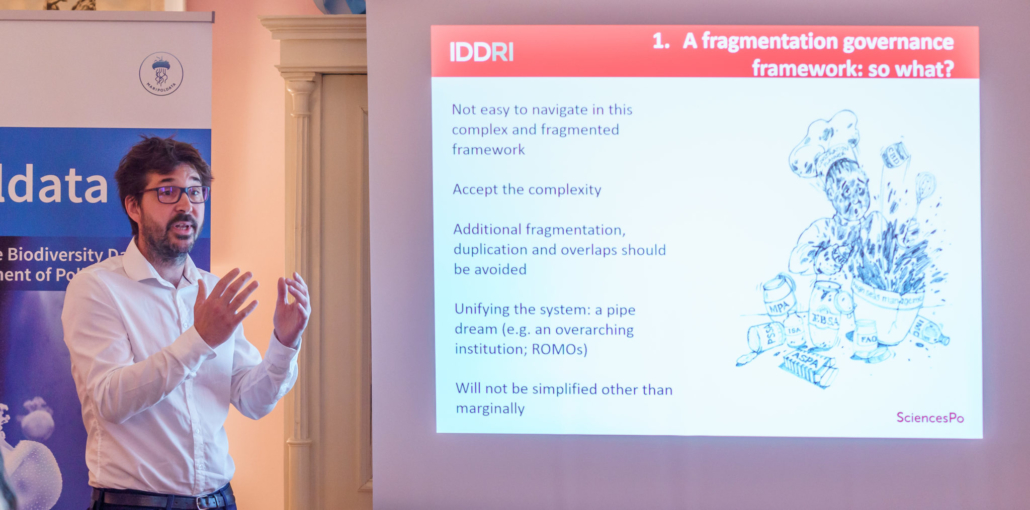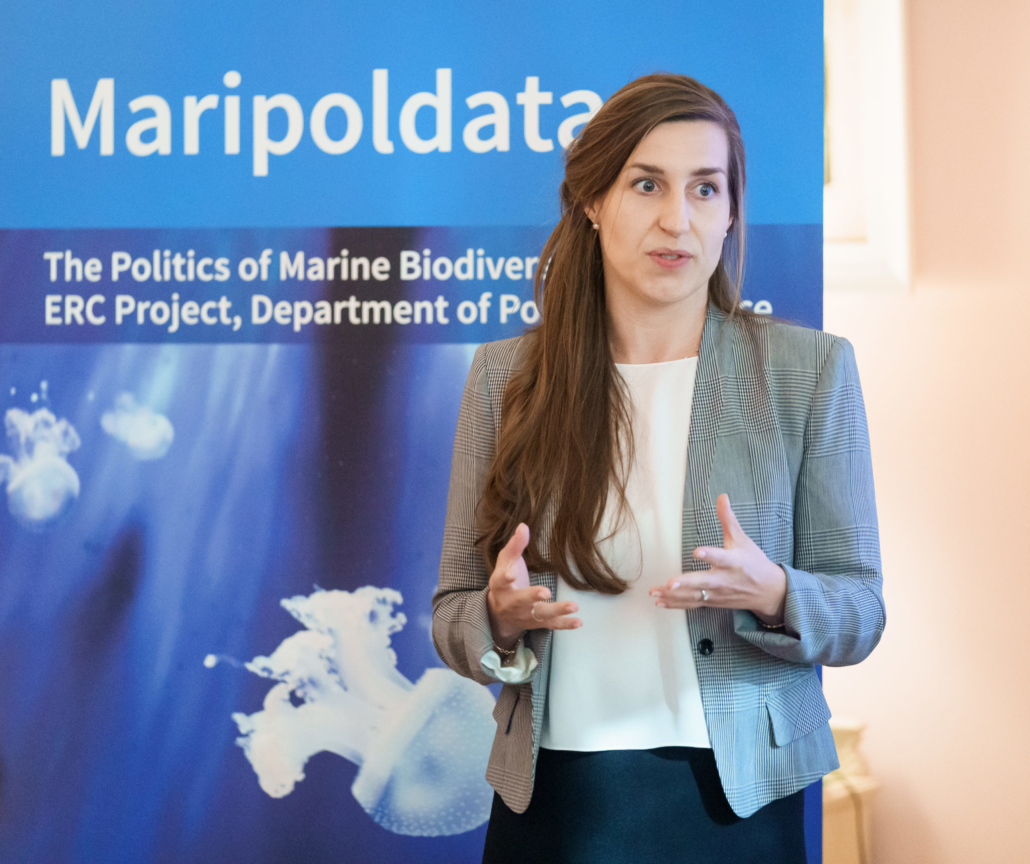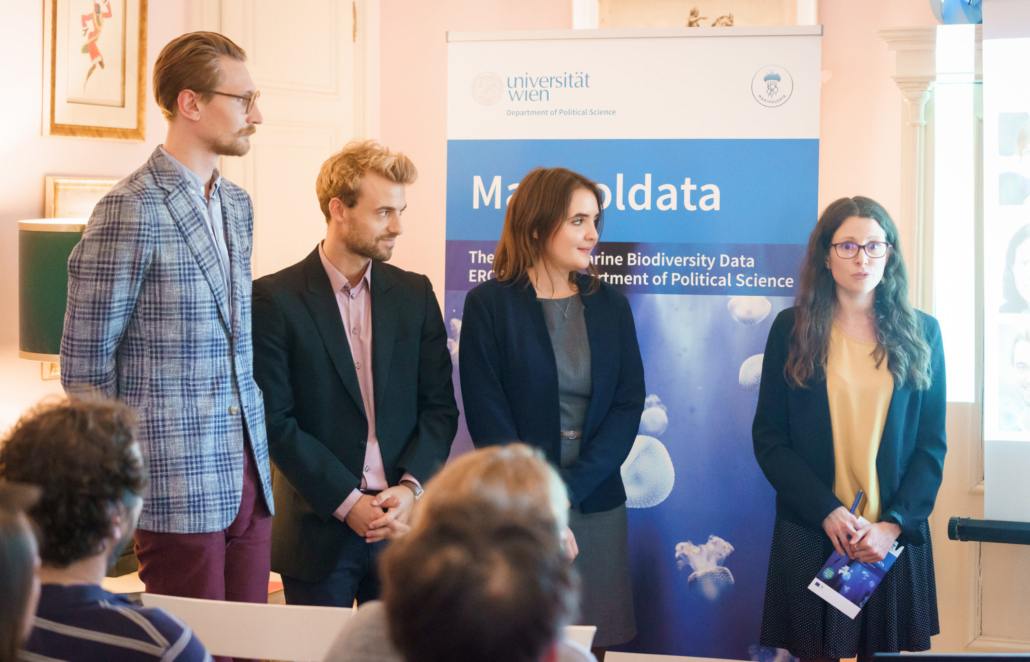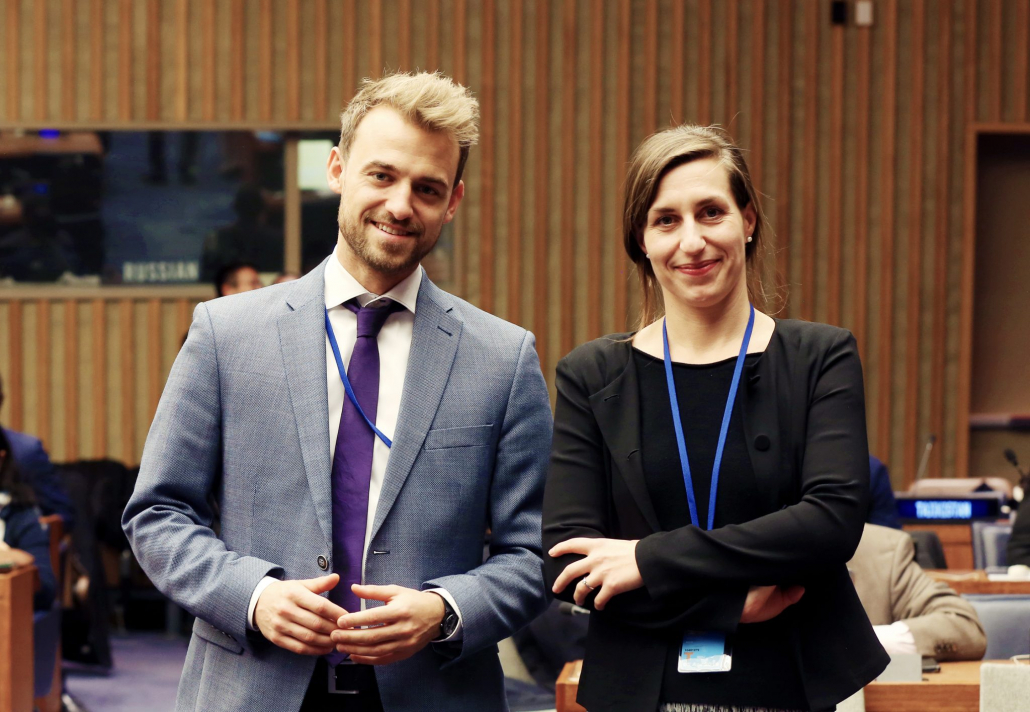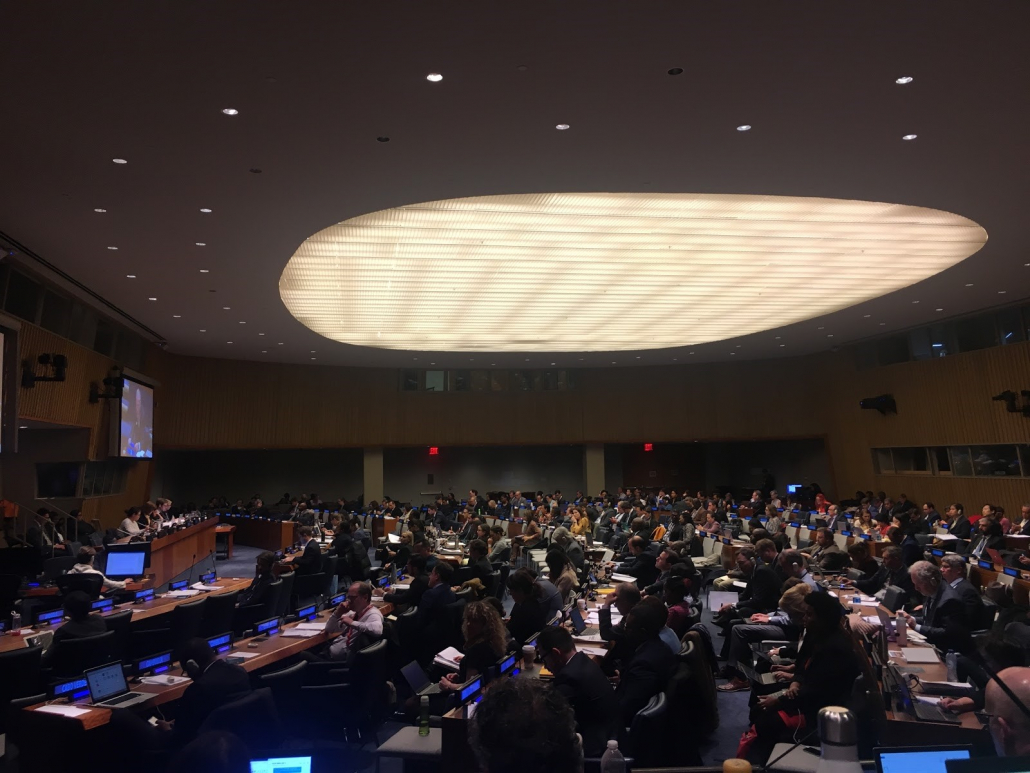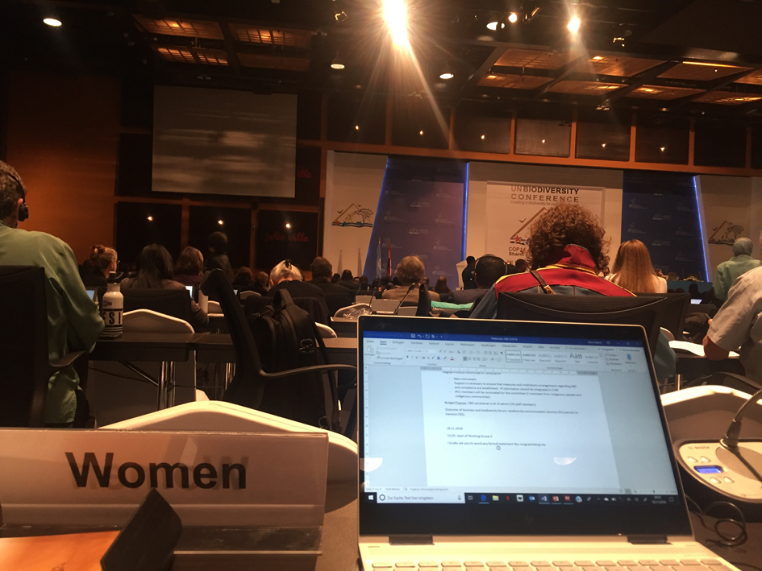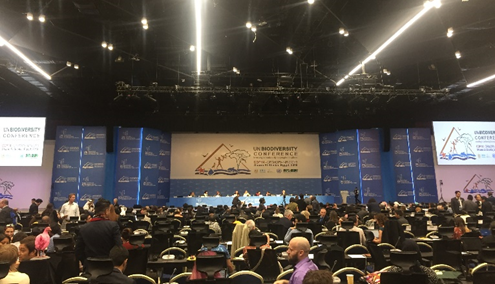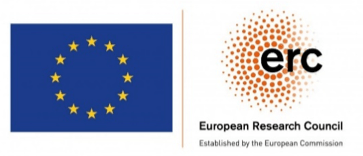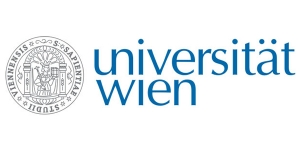Slow progress in the third BBNJ meeting: Negotiations are moving – but sideways
After the observations of the first week of the third Intergovernmental Conference (IGC 3) on the conservation and sustainable use of marine biological diversity, the MARIPOLDATA team shares insights of the second week. This blog entry provides a summary of the topics discussed, overall progress made, as well as the challenges that remain to be resolved for the upcoming fourth Intergovernmental Conference (IGC 4) in March 2020.
Imagine all the people, sharing all the ocean
To whom belong the parts of the ocean that are shared among all states? Under the United Nations Convention of the Law of the Sea (UNCLOS), states are free to navigate the areas beyond national jurisdiction and can enjoy “the freedom of the high seas” (UNCLOS Art 87). However, does that imply that all states can collect resources in these areas, conduct research, discover new species and develop new pharmaceutical or other commercial products from the marine genetic material found in the depths of our common ocean? Marine scientific research is costly and not all states have the capacities to access marine genetic resources in areas beyond national jurisdiction. But should the ones who invest in discovering new species and developing new products not be allowed to own their “treasure”? This calls for a new regulatory framework for marine genetic resources (MGRs), which constitutes one of the four pillars of the future new legally binding instrument. The question is whether this agreement will allow for “first come – first serve” or ensure that the resources of our ocean are considered “common heritage of humankind” with access to and benefits from these resources being shared among all states, taking into consideration current and future generations, as well as the environment in itself.
The BBNJ crab dance
The second week of negotiations of the third Intergovernmental Conference (IGC 3) continued with discussions on the remaining cross-cutting issues, and the four BBNJ packages marine genetic resources (MGRs), area-based management tools (ABMTs), environmental impact assessments (EIAs) and capacity building and the transfer of marine technology (CB&TT). The conference included the two formats of the previous week, namely “Informal Working Groups” – discussions in the plenary, which were open to all participants of the conference, including non-governmental and intergovernmental organisations (NGOs and IGOs) – and so called “Informal Informals”, which were held in a smaller room, with restricted access for NGOs and without the participation of the press. The presidency had introduced the informal informals in the first week of ICG 3 to allow government representatives to negotiate text in an informal setting and eventually start developing compromised treaty language.
Enthusiasm for the structure of the informal informals, however, was rather limited: On the side of the NGOs because they were only permitted restricted access and on the side of the government representatives because the dynamic was very similar to the discussions in the plenary, not allowing for informal talks on specific issues that needed further elaboration. With only a few delegates praising this format, the majority was calling for a different dynamic of the sessions, with the opportunity for more in-depth, informal conversation, as well as greater transparency. Despite the formality of all sessions, discussions progressed in the different topics. Such progress could largely be seen in textual formulations, regarding agreement on the inclusion and exclusion of certain wording, re-structuring, streamlining or adding of articles and paragraphs. Nevertheless, key issues that have divided states’ positions since the beginning of the meetings, could not be resolved at this conference. Although only one further IGC is planned, the past 2-weeks of the BBNJ process rather reflected the walking of a crab – moving sideways, not forward.
Regarding marine genetic resources (MGRs), delegates agreed that the provisions in ABNJ should only apply after entry into force of the agreement, rather than retroactively[1]. However, key definitions remained unclarified, such as “marine genetic material” or “access to” MGRs. Further elaboration will be necessary on agreeing whether access to MGRs would entail collecting the resource where found/originated, where processed, or also to include digital sequence data and derivatives. Delegations are particularly divided on the question whether fish should be included as a marine genetic resource, due to concerns of impacts on current fisheries management and the problematic definition of “fish”. Another issue that will require further discussions are intellectual property rights regarding MGRs.
Discussions on area-based management tools (ABMTs) and marine protected areas (MPAs) achieved progress in clarifying the specific steps of the process. Delegates agreed that consultation and assessment of proposals for ABMTs should be inclusive, open and transparent[2]. They identified a potential advisory role for a scientific and technical body for making these proposals, however, there is still a lack of shared understanding on definitions of ABMTs and MPAs and implications for their respective processes. There is agreement that state parties should be responsible for making the proposals for ABMTs and MPAs but delegations are still divided on the question whether a scientific and technical body should be involved in monitoring and review. Another issue that has sparked disagreement and remains unresolved is the relation between the new instrument and other legal global, regional, sub-regional and sectoral bodies, which has been slowing down progress over the past two weeks.
Delegates welcomed discussions regarding environmental impact assessments (EIAs), expressing the need for monitoring, reporting and review. However, the discussions did not give answers on thresholds or criteria to be used for EIAs and divided delegations into some supporting an “impact-oriented”, and others preferring an “activity-oriented” approach. Disagreement remains in regards to the type of impacts, including transboundary and cumulative impacts, as well as social, economic, cultural and health impacts. While governments of the Global South would like to see a reference to social, economic and cultural impacts of harmful activities in ABNJ – particularly on coastal states – governments of the Global North prefer a narrow focus on environmental impacts only. Whether to have a reference to coastal states at all remained contested and had to be postponed to future meetings. Similarly, discussions have not moved forward on identifying the role that traditional knowledge might play within the framework of an environmental impact assessment. Also the potential function of a scientific and technical body requires further elaboration, however, delegates generally preferred state parties to be the responsible entity.
Considering the limited capacity of developing countries, particularly of the least developed countries (LDCs) and small island developing states (SIDS), and capacity building and the transfer of marine technology (CB&TT) is of key importance for the G77/CHINA, the PSIDS, the African Group, as well as the Core Latin American Countries (CLAM) and the Caribbean Community (CARICOM). Discussions on CB&TT showed progress on the potential role of the Conference of the Parties (COP) in developing a list of guidelines and in undertaking monitoring and review[3]. However, there are still diverging views on whether capacity building and marine technology transfer should have a mandatory element and be complemented by voluntary efforts, or if it should solely be voluntary. Questions, moreover, remain on which countries should benefit from CB&TT.
Regarding cross-cutting issues, delegates generally agreed on the establishment of a “clearing-house mechanism” (CHM), to provide a platform for sharing information and data. Discussions included the question of which entity to be the responsible body, whether to make information publicly available, how to deal with confidential data, as well as possible functions. Ideas included the dissemination of pre-cruise information and post-cruise notification, documentation of EIAs and cooperation regarding ABMTs[4]. While there was general agreement on making data and information publicly available while ensuring that confidential information is exempted, there is so far no agreement on the type of data and information that the CHM is supposed to provide, nor which body should be responsible for managing it. Suggestions include the Intergovernmental Oceanic Commission (IOC-UNESCO) and the secretariat which will be established under the new instrument[5]. There was also overall support for the establishment of a Conference of the Parties (COP) to, among other functions, determine CB&TT types[6].
The part on the settlement of disputes could not be sufficiently discussed, even though delegates stayed longer than the interpreters were available. While there was agreement that states have an obligation to settle disputes by peaceful means, no agreement emerged on the procedures for such settlements, as positions divergence on to what extent the article should be drafted on the model of UNCLOS and what this would imply for its non-parties.
Several delegates emphasised the inclusion of the use of best available science and traditional knowledge of indigenous people and local communities, as well as additional principles, such as adjacency, transparency, the polluter pays principle, intra- and intergenerational equity, and the obligation to protect and preserve the marine environment[7][8]. The PSIDS advocated for the establishment of a scientific, technical and technological body, and the inclusion of traditional knowledge of indigenous people and local communities, as well as the recognition of the special circumstances of SIDS.
Even though delegates already started text-based negotiations, discussing specific wording, no treaty will be concluded before states agree on the key issues that still divide positions until now. Therefore – considering that there is currently only one more BBNJ conference planned – state delegations have already expressed the need for quality of the agreement, rather than finishing in time and rushing into a treaty that everyone can interpret differently, or which implementation is not realistic.
Sailing in the same “IG-sea”
When the sun set over the UN headquarters on Friday, the discussions had already ended, as progress was not to be expected on the major issues until the next IGC. As the delegate of Japan mentioned in the ending remarks: This conference laid out the different positions of delegations and their level of flexibility very well[9]. But now everyone is looking towards the next conference with expectations: With the expectation that the president compiles the discussions into a first draft and proposes a negotiation format that will give delegates with their diverging views and interests sufficient time to discuss. Simultaneously, with the expectation that the draft covers as many issues as possible and guarantees transparency and representation of the delegations in the working groups. Not an easy task, considering the contrasting requests from delegations. While some delegations request a streamlined text, others prefer to have an options-based text, with all the points and positions raised at this conference.
Delegates and representatives from non-governmental organisations would like to see the text of the first draft until the end of 2019, ideally already by October, which would give delegates time to review the different positions and prepare their statements. But rather than repeating what happened in IGC 3 – namely coming together to highlight the important issues for their own countries – IGC 4 is expected to focus on compromise of statements. Some delegates suggested to have meetings within their regions and prepare proposals already in advance of the conference. This would allow for discussions prior to IGC 4 and enable a steep start into negotiations when they get back together in March 2020.
But an equitable and fair outcome of this agreement will be hard to negotiate if limited capacity to participate, as well as to fully grasp the content of the negotiations is not guaranteed for all states. While there are some delegations with over 10 representatives, some states have no representation at all. Will this instrument be able to universally reflect the common grounds of all states even if they are disproportionately represented, and with diverse expertise and experiences? The trust fund offers the possibility to sponsor delegates from developing countries, however is highly reliant on voluntary contributions by states, intergovernmental organisations and private persons. This IGC, financial resources in the fund only allowed for five delegates from developing countries to attend the conference while others were left without funding and hence without voice, unless their position could be represented by a group of states they aligned with.
Hope was gained back, when delegations – which had the previous two weeks been insisting on their own interests – reflected the need for cooperation in their closing statements. President Rena Lee looked up to the window where curious visitors watch the negotiations from time to time and shared: “I wonder what they are thinking about us”, reminding the delegates of their important mandate. There seemed to be the realisation that “we are living in a common world and are sailing in a single sea”[10] and that while our “common canoe gets more and more vulnerable, we need to paddle even faster”[11].
[1] ENB Report Vol. 25 No.218, Sep 2, p. 22, retrieved from: https://enb.iisd.org/download/pdf/enb25218e.pdf.
[2] Ibid. p.10.
[3] Ibid. p, 16
[4] ENB Report, 27th August 2019, Vol 25 No.214, p.2, retrieved from: http://enb.iisd.org/download/pdf/enb25214e.pdf.
[5] ENB Report, 28th August, Vol 25 No 215, p.2, retrieved from: http://enb.iisd.org/download/pdf/enb25215e.pdf.
[6] ENB Report Vol. 25 No.218, Sep 2, p. 2, retrieved from: https://enb.iisd.org/download/pdf/enb25218e.pdf.
[7] Ibid. p.5
[8] BBNJ ICG 3, Closing Statement of Paraguay on behalf of AOSIS, retrieved from: http://statements.unmeetings.org/media2/21996902/paraguay-eng-.pdf
[9] Delegate of Japan, BBNJ IGC 3, Closing Statements, 30th August, 3.45pm
[10] Delegate of the Philippines, BBNJ IGC3, Closing statements, 30th August 4.11pm
[11] IUCN, BBNJ IGC 3, Closing statements, 30th August, 4.30pm
